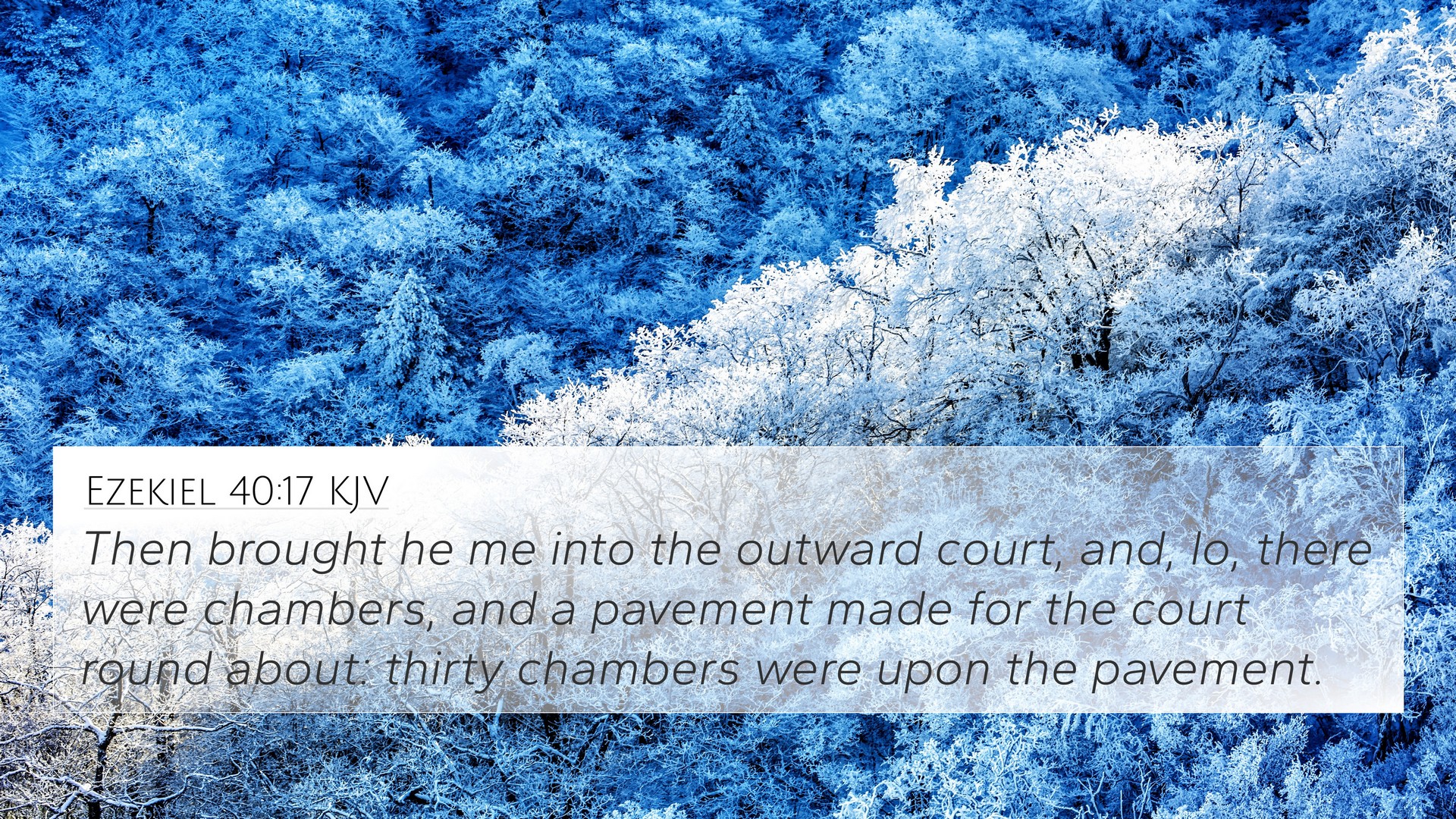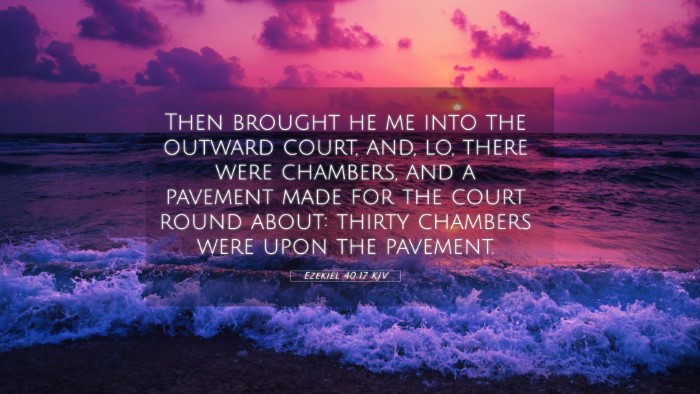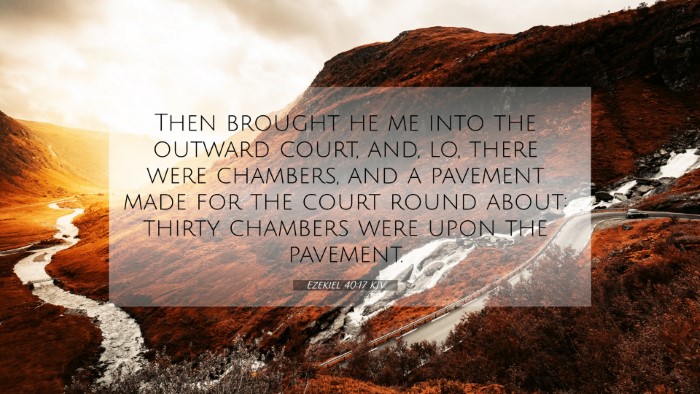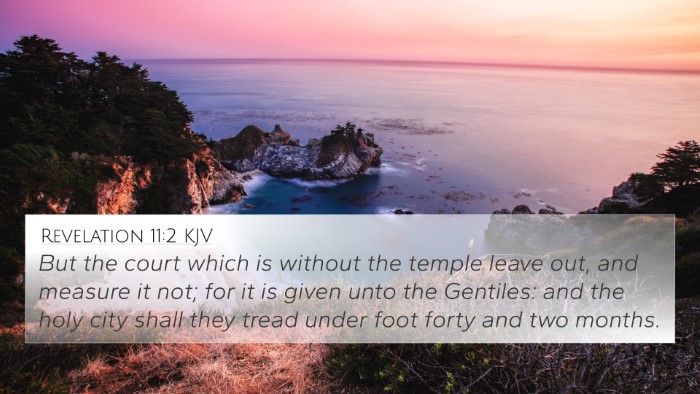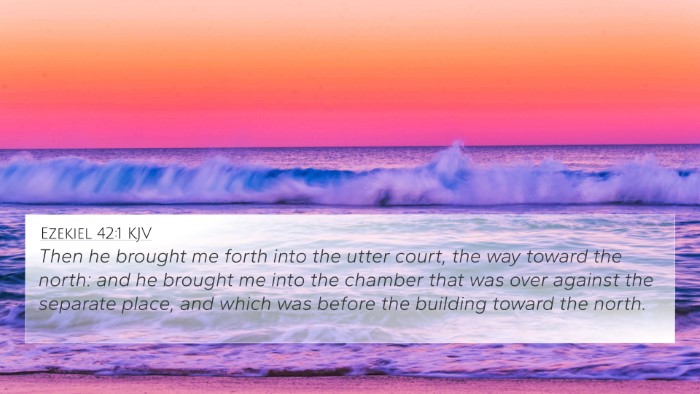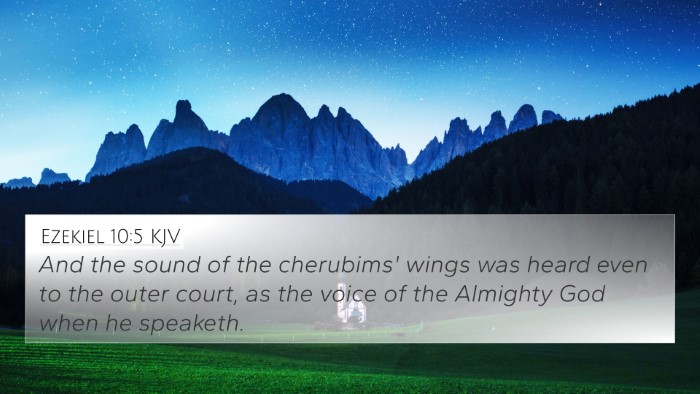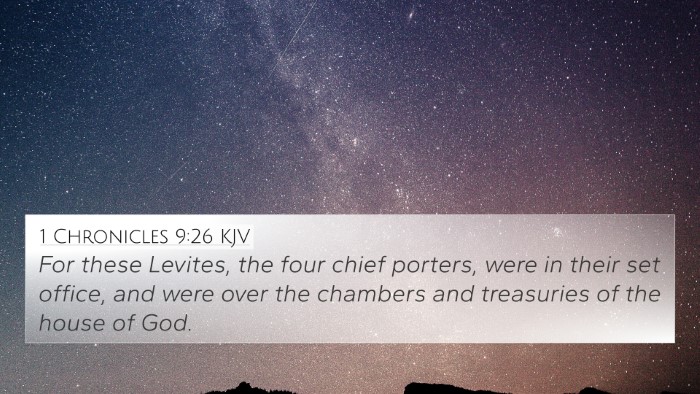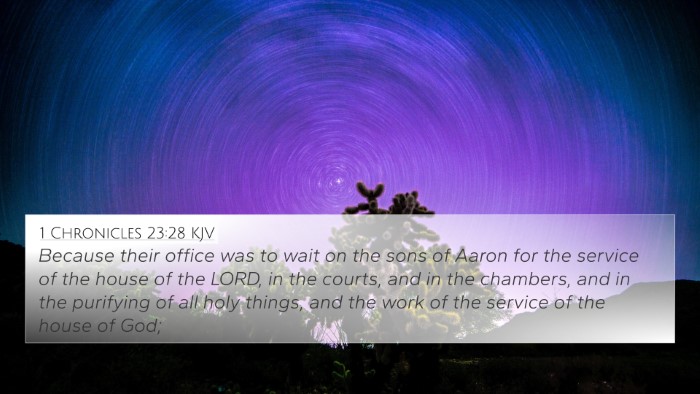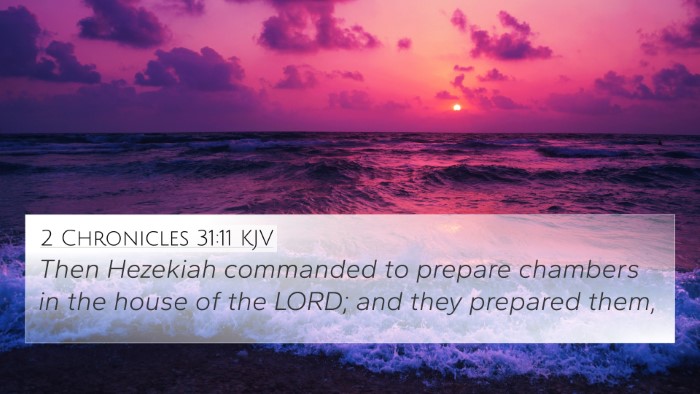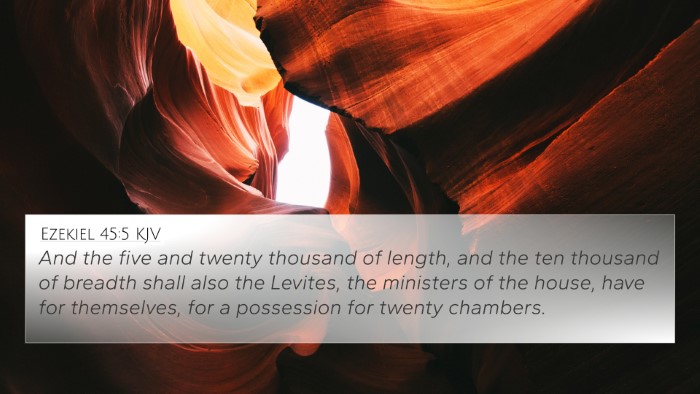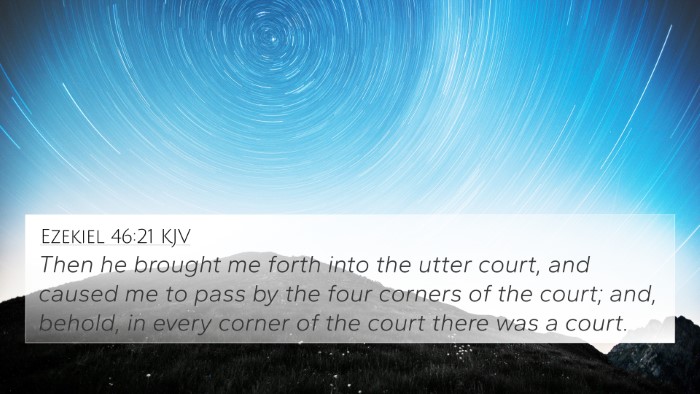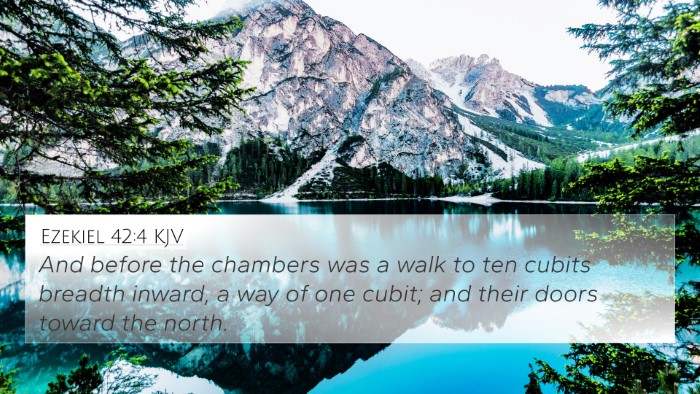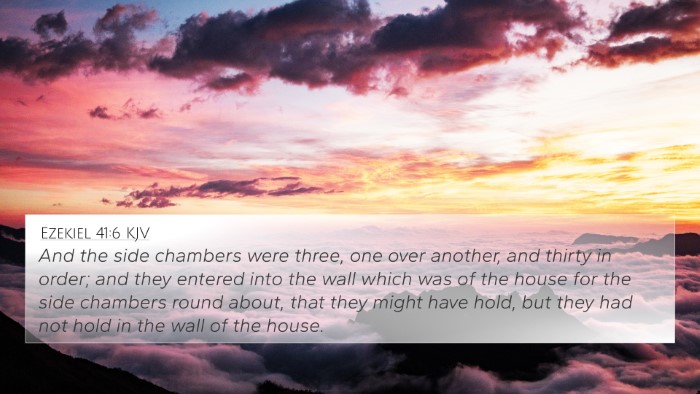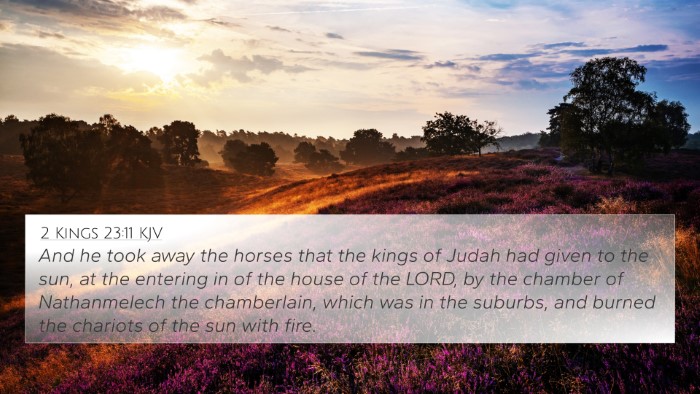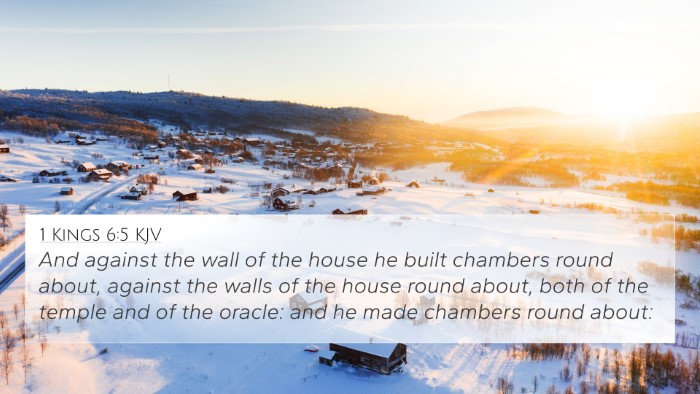Ezekiel 40:17 - Understanding the Verse
Ezekiel 40:17 states:
"Then he brought me into the outer court; and, lo, there were chambers, and a pavement made for the court all around: thirty chambers were upon the pavement."
This verse marks the beginning of a detailed description of the temple that Ezekiel sees in his vision. It emphasizes the structure of the sacred space and the layout designed by God through angelic guidance. This summary synthesizes insights from various public domain commentaries including those by Matthew Henry, Albert Barnes, and Adam Clarke.
Commentary Insights
The commentaries provide a multifaceted view of this passage, shedding light on its historical, theological, and prophetic significance:
- Historical Context: The outer court mentioned refers to the area surrounding the temple, significant for the administration of sacrificial rites and offering services, indicating a place of communal worship.
- Thematic Significance: The thirty chambers signify God's provision for the priests and their functions. Each chamber holds importance for services that accommodate the worshipers and sacrifices, symbolizing a structured approach to worship.
- Prophetic Outlook: Ezekiel’s vision presents a future reality of the restored temple, seen as a precursor to the New Testament understanding of Christ as the ultimate sanctuary and mediator.
- Spiritual Implications: The careful design of the temple reflects God’s desire for His people to engage in worship that is orderly and significant, highlighting God's holiness and the need for reverence in worship.
- Symbolism of the Pavement: The pavement serves not only a practical purpose but also represents God's foundation for worship. The idea of ‘paving’ can symbolize the established path God sets for His people, connecting them to divine holiness.
- Prophetic Connection: This passage can be cross-referenced with Revelation 21:15-21 where the New Jerusalem is described with foundations and streets of gold, emphasizing the divine glory in God's habitation.
- Parallel Themes: The structured nature of the temple can also be seen in 1 Corinthians 14:40, where Paul urges that all things be done decently and in order, reflecting the same principle of divine structure in worship.
- Symbol of Community: Ezekiel’s vision acts as a precursor to the communal aspect of worship in the church today, aligning with Hebrews 10:25 which encourages believers not to forsake assembling together.
- God’s Covenant: This vision reinforces the covenant God made with Israel, reminiscent of Exodus 25:8 where God commanded the creation of a sanctuary.
- Juxtaposition with the New Testament: It presents a contrast with the physical temple of the Old Testament and the spiritual temple of the New Testament, which Jesus references in John 2:19-21, highlighting His body as the temple.
Cross-References for Further Study
For enhanced understanding, readers are encouraged to explore the following cross-references:
- Ezekiel 40:1-49 - The full description of the temple vision.
- 1 Kings 6:1 - The building of Solomon's temple.
- Isaiah 56:7 - God's house to be a house of prayer for all nations.
- Zechariah 6:12-13 - A prophecy about the Branch and the temple.
- Matthew 21:12-13 - Jesus cleansing the temple and asserting its purpose.
- Hebrews 9:1-28 - The significance of the earthly temple compared to the heavenly.
- Revelation 11:1-2 - Measurement of the temple and the significance of its holy space.
The Importance of Cross-Referencing
Understanding Ezekiel 40:17 requires a comprehensive approach to biblical study. The insights gained through cross-referencing Biblical texts allow the reader to:
- Identify connections between Bible verses: Finding links from the Old Testament to the New Testament enriches understanding.
- Enhance interpretation: Utilizing tools like a Bible concordance or a cross-reference guide can lead to a deeper comprehension of scripture.
- Engage in a cross-referencing Bible study: Helps to delve into themes that transcend individual verses, fostering a holistic understanding of God’s word.
- Recognize inter-Biblical dialogue: Understanding how different scriptures converse with and strengthen each other highlights the unity of Scripture.
Conclusion
The examination of Ezekiel 40:17 provides rich theological implications and insights into worship's role in the life of believers. By engaging with biblical cross-references, we facilitate a deeper comprehension of God's intentions and the continuity of His message throughout Scripture.
